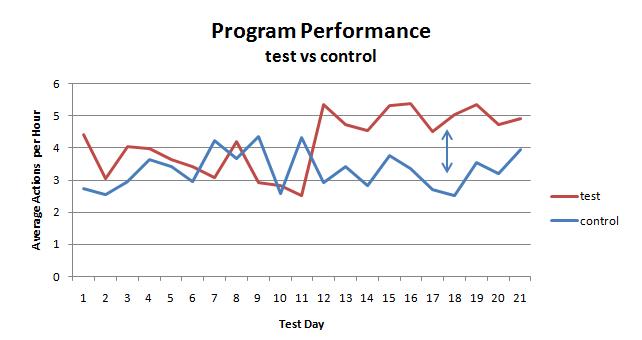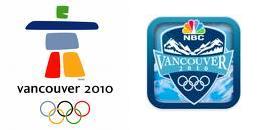Listing Your Way to the Finish Line
Mar 25, 2010 Statistics, TV and iTV Analytics, Web Analytics
Draft Marketing Analysis Checklist
After reading Atul Gawande’s recent book “Checklist Manifesto”, I was thinking there should be a checklist for marketing analysis. One point that Mr. Gawande makes in his book is that highly-trained specialists shun checklists because in their minds only dummies need lists. However, a majority of surgeons, while rejecting lists for their own use, would want another surgeon to use one if operating on them. This is because they know how easy it is to forget one detail in hundreds.
In marketing analysis, there are a lot of steps and a lot of things to think about, and even a smart person might drop a stitch here or there if they are not following some kind of list. I have included a rough one I dashed off quickly, in hopes that others might offer refinements, altogether better lists, or more specific versions for types of marketing programs. Here it is, have at it!
DEFINE
• SET goals/ hypotheses for program
• SELECT metrics
• CREATE a measurement plan
EXECUTE
• EXECUTE program and measurement plan
• VALIDATE raw data
• PREPARE dataset for analysis
ANALYZE
• VISUALLY EXPLORE dataset for patterns and problems
• SUMMARIZE dataset statistics
• SCORE performance vs. goals/ support for hypotheses
• LIST likely conclusions
• IDENTIFY unexpected or surprising findings
• VALIDATE likely conclusions with numerical/statistical support
• SELECT final findings
COMMUNICATE
• REPORT findings for future activity
• REVIEW findings with user community
• CAPTURE questions &issues from user community
FOLLOW-UP
• INVESTIGATE user-identified questions & issues
• IDENTIFY impact on original findings
• REPORT findings of follow-up analysis
What do you think?
Tags: Analysis, Analytics, Atul Gawande, Check, Checklist, List, marketing, Process
Conversion Optimization: It’s All About Action
Mar 21, 2010 Optimization, Statistics, Web Analytics
Optimizing your website to maximize the number of page views or visitors, while sounding reasonable, may unwittingly have you wasting marketing dollars and effort on people who won’t buy anything or participate on your website (or your advertisers’ websites) in the foreseeable future.
When you spend time and money on your site content or on audience development for your site, you want to make sure you are measuring the impact of those changes in terms of number of desired actions taken by visitors to your site, in terms of the efficiency with which you are spending resource. The key measure you are tracking on the cost side is the ECPA, or effective cost per action. If you have a small site and are passive about audience development, perhaps it makes sense to optimize to Actions Per Visit (APV), or Actions Per Daily Unique visitor (APDU). But if you are spending serious time and money then you need to track these costs and what they generate.
Lights! Camera! Actions!
Before this kind of thing makes any sense at all you have to define and start measuring the on the kinds of action you are trying to get visitors to take. Are you selling things? Are you getting paid for advertising shown on your site? Are you trying to develop leads for your business? Are you trying to get people to download something? Are you trying to get people to register or sign up? Whatever actions you want people to take on your site, they need to be measured if they are going to be the basis for your ECPA (or APV, APDU). Most of these things can be measured using Google Analytics.
In any case, once you have tagged or otherwise instrumented your site to capture your desired actions, then you can track ECPA (or APV, APDU) associated with your site.
Then when you make big changes, you can see whether they improved your site’s performance. You can measure the effectiveness of your SEM, your CPC campaigns on search engines, your affiliate programs, and your efforts to publicize your site.
Measuring Dollars Out per Dollar In
ECPA is a pretty good measure, but, it only measures efficiency on the cost side. You also want to measure the return you get in dollars and cents. You can do this (or approximate this) if you can come up with a dollar value for each of your site’s target actions, either using an average value per action type or actual value per action, then you don’t need the oversimplification that focusing only on ECPA imposes. Simply put, all actions on your site are not worth the same amount and it actually makes sense to spend more on actions that are worth more. What you really ultimately want is an ROI. I’ll talk about that in a later post.
Tags: Conversion optimization, Cost per Action, CPA, eCPA, Optimization
Math Marketing: Excellent White Paper by Dimitri Maex
Mar 15, 2010 Industry News, Marketing And Advertising Analytics, Optimization, Statistics, Web Analytics
Dimitri Maex is the Managing Director Marketing Effectiveness at Ogilvy & Mather, and the author of a fantastic white paper that is posted HERE on the WPP website . What is so great about it is that it presents exactly what most companies need to know in order to get started in harnessing the full power of quantitative marketing methods, in a package that only takes about 15 minutes to read.
He starts with the history of quantitative marketing, gives a sense of the place of “math marketing” in the current business landscape, describes the types vendors with which a company can ally, and the wraps up with how a company should organize and hire to around the new skills and challenges peculiar to the coming era of quantitatively-driven marketing.
Some nits:
I don’t like the sound of the name “math marketing”. It’s just that the math doesn’t do any marketing – people still make the decisions and integrate the insights into their work, they just use data-based metrics and statistical techniques to assist them in getting a coherent picture of what is working and what isn’t, and formulating what might work in the future. It is probably also a terrible way to brand something you are selling to execs who mostly sucked at and avoided math in school. It’s like calling it “eat your vegetables marketing”.
The section on vendors is far from exhaustive. He leaves out SEM/SEO agencies in particular, and provides only the massive brand names in most of the categories he is describing. I guess Maex works for an ad agency – so he’s not responsible for selling you on his competition – but I’d look elsewhere for a buyer’s guide.
Whatever, he is right on the money about the current state of affairs and where most companies need to go.
He wraps with a couple of lists: Seven Steps to Increased Accountability, and Seven Steps to Increased Accountability to Transformational Consumer Insights.
This is a great document for business folk who want to understand the big picture of marketing analytics and quantitative marketing techniques, and want to understand how to manage them to best effect.
Tags: Data Mining, Dimitri Maex, Doubleclick, econometric models, Google Trends, Marketing Analytics, marketing mix models, Math Marketing, Microsoft, Ogilvy & Mather, quantitative marketing
Final TV Tally for 2010 Olympics: 190 Million Viewers in the U.S., 3.5 Billion Viewers Worldwide
Mar 5, 2010 Industry News
Mike Reynolds’ article in Multichannel News reports 190 million US viewers for the full 2010 Winter Olympics in Vancouver. This is 3 million more than watched the Salt Lake City Olympics in 2002, 6 million more than watched the Torino Olympics in 2006. This year’s Winter Olympics was second only to the 1994 Olympics in Lillehammer – which had 204 million US viewers, in part because of the attention drawn by the Nancy Kerrigan/Tanya Harding incident.
According the Vancouver Olympics website, 3.5 billion viewers worldwide watched this years’ events. That’s billion, with a b.
This kind of viewership flies in the face of claims by emerging media that TV is growing irrelevant. This kind of massive simultaneous experience is in the middle of the TV’s wheelhouse, and the smaller screens seem to play a more of supporting role in them. TV is best at the while-its-happening experience where you want to see every detail and experience it all as if you were sitting in the crowd, but were somehow omniscient and capable of flying to whatever angle showed the action best. This strength is leveraged to best effect when there is a live broadcast such as the final Sunday night when the US v. Canada hockey final was battled to an overtime Canada victory. People watched on their TVs, and used their computers and smartphones to tweet about it.
Did You Play With Your TV? (a shameless plug for my #1 client, Ensequence)
If you saw the Olympics via Dish Networks or Verizon FiOS, then you could access weblike interactive content on your TV screen alongside your favorite Olympics events on MSNBC, CNBC, or USA – if you clicked and interacted, leave a comment and tell me about it. What did you like about it? What did you hate about it?
Tags: 2010 Olympics, interactive experience, Interactive Television, Interactive TV, Interactivity, Mike Reynolds, Multichannel News, Olympics, Olympics Interactive, TV Vewers, US TV Viewers, Vancouver, Worldwide TV Viewers



